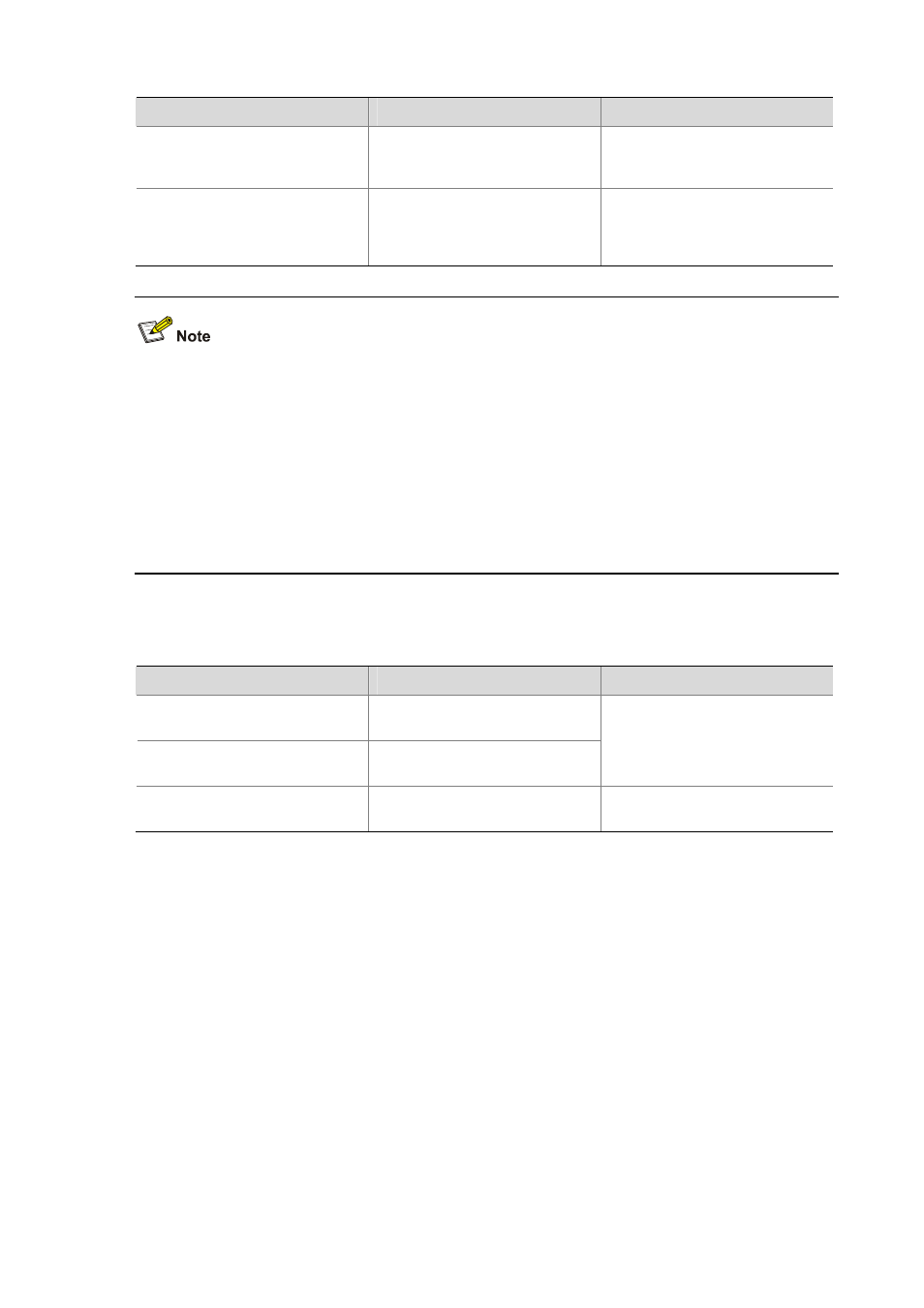Displaying and maintaining dhcp snooping, Dhcp snooping configuration example, Network requirements – H3C Technologies H3C WX6000 Series Access Controllers User Manual
Page 398

38-5
To do…
Use the command…
Remarks
Configure the handling strategy for
requesting messages containing
Option 82
dhcp-snooping information
strategy
{ drop | keep | replace }
Optional
replace
by default.
Configure the padding format for
Option 82
dhcp-snooping information
format
{ normal | verbose
[ node-identifier { mac | sysname
| user-defined node-identifier } ] }
Optional
normal
by default.
z
To support Option 82, it is required to perform related configuration on both the DHCP server and
the device enabled with DHCP Snooping. Since the DHCP server configuration varies with devices,
it is not mentioned here.
z
If the handling strategy of the DHCP-Snooping-enabled device is configured as replace, you need
to configure a padding format for Option 82. If the handling strategy is keep or drop, you need not
configure any padding format.
z
If the Option 82 is padded with the device name (sysname) of a node, the device name must
contain no spaces. Otherwise, the DHCP-Snooping-enabled device will drop the message.
Displaying and Maintaining DHCP Snooping
To do…
Use the command…
Remarks
Display DHCP snooping address
binding information
display dhcp-snooping
Display information about trusted
ports
display dhcp-snooping trust
Available in any view
Clear DHCP snooping address
binding information
reset dhcp-snooping
{ all | ip
ip-address
}
Available in user view
DHCP Snooping Configuration Example
Network requirements
z
AC is connected to a DHCP server through GigabitEthernet 0/0/1, and to two DHCP clients through
GigabitEthernet 0/0/2 and GigabitEthernet 0/0/3.
z
GigabitEthernet 0/0/1 forwards DHCP server responses while the other two do not.
z
AC records clients’ IP-to-MAC address bindings in DHCP-REQUEST messages and DHCP-ACK
messages received from trusted ports.
z
AC supports Option 82. After receiving a DHCP request from the client, AC adds Option 82 padded
in verbose format to the request message and forwards the message to the DHCP server.
